Parsley is a very valuable vegetable in terms of application in cooking. Firstly, this is a fairly common spice. Secondly, it is a valuable source of vitamins and microelements. Harvesting parsley for winter at home is done in several ways, each of which is interesting in its own way.
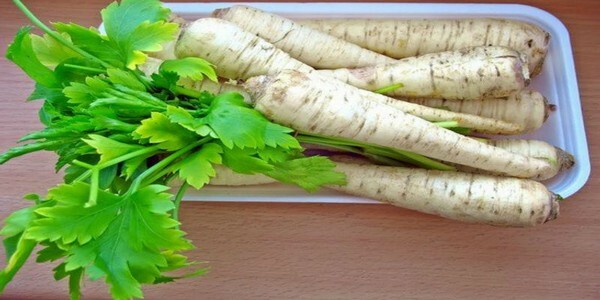
are valuable in parsley. Kinds of parsley
Before starting the conversation about how to prepare parsley for the winter to preserve the fragrance, we will remind our readers about the types of parsley we grow on our plots. After all, depending on this and will need to choose the best way and time for its procurement.
Root
This kind of parsley provides both leaves and root vegetables. Of course, you can limit yourself to only root varieties, but there is one small "but".The leaves of the root parsley are coarse, they do not have that softness and aroma inherent in leafy varieties.
At the beginning of the vegetation and in the middle of summer the leaves of the root varieties are still tender, but their collection will severely deplete the plant and in autumn we will not get good roots. When autumn harvesting leaves from such a parsley is better harvested by salting, the salt will soften the rough leaf blades.
Separately it is necessary to tell about simple storage of root crops in a cellar or other place adapted for this purpose. It is not necessary to create special conditions for it, parsley is perfectly kept together with carrots, potatoes and other vegetables.
Warning! Optimum storage temperature of root crops is 1-5 degrees Celsius.
Some part of the parsley harvest should be left on the bed. In early spring, from the roots left in the ground will appear fragrant leaves, which will be an excellent seasoning for your spring dishes. With the same purpose, roots are dripped in the winter in pots and are carried out greening on the windowsill.
Leaf
Leaf parsley is also not advisable to stand for as long as possible before coarsening the plates. It is best to harvest them throughout the summer season, starting three months after sowing. Gradually cutting several leaves, you stimulate branching and growth of additional leaves. Finally, the harvest of parsley leaves for winter is cut shortly before the onset of frost.
It remains to add that the leaf varieties of parsley are subjected to various methods of processing and harvesting: drying, salting, frost.
Curly
These varieties of parsley belong to the leaf, and curly they are called for the special delicacy of the leaves. In addition, curly varieties have slightly coarser plates and differ in their flavor. If you like this type, then you can prepare the "curls" of this parsley for winter storage also in all ways.
Methods of blanks
We go directly to the workpieces. Since it is possible to store parsley in the refrigerator only for a short time, in order to provide itself with vitamins for the winter, several methods are used:
- drying;
- freezing;
- canning.
Drying
This way of preparing products is known to humanity since ancient times. People dry for future use and meat, and fish, and mushrooms, and fruits, and vegetables, and herbs. Did not become an exception and parsley.
The plant is dried and roots and leaves, and apply several methods:
- In vivo under canopies or on the verandas, dried mostly leaves to remove moisture from the roots, sometimes short autumn days just not enough.
- In electric and gas cookers.
- In special electric dryers for vegetables and fruits.

With any drying method, the raw materials are first sorted and washed thoroughly. Then you need to cut the leaves and root crops into small pieces. The choice of size depends entirely on your preference.
Attention! The larger the pieces of vegetables, the longer the drying process continues!
When cutting parsley, you should pay attention to such moments:
- Remove all coarse petioles from the leaves, they dries much longer than the leaf blades and can prolong the drying process.
- Root crops can be cut into thin circles, or grated on a large grater. In any case, in the same tray should be pieces of the same size.
- For drying outdoors, use wooden, plastic or metal pallets pre-covered with parchment.
- A parchment paper is also needed when drying on baking trays in the oven.
- Store the dried leaves and root vegetables in a sealed container, preferably in glass jars.
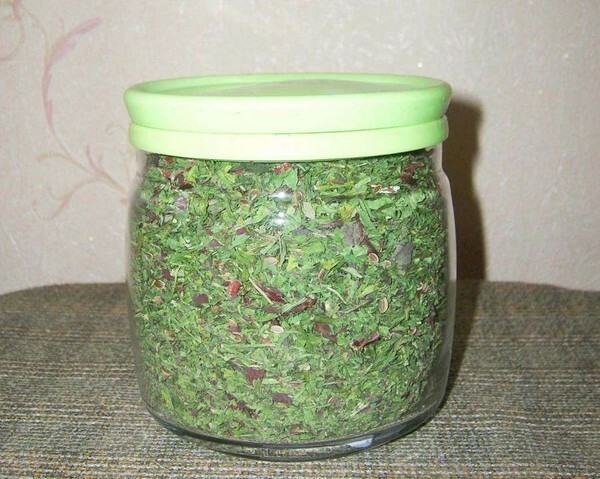
Tip! Some mistresses put mixed leaves and pieces of roots into one jar, but they are better to dry them separately!
Freezing
Due to the development of household appliances, in particular the wide distribution of freezers, this method of billets as a freezer has become very popular. Is it possible to freeze parsley? Of course yes.
It is possible to frost the leaves and roots. To do this, they should first be prepared, as for drying.
The only difference is that the cutting can be larger, as in the next photo.
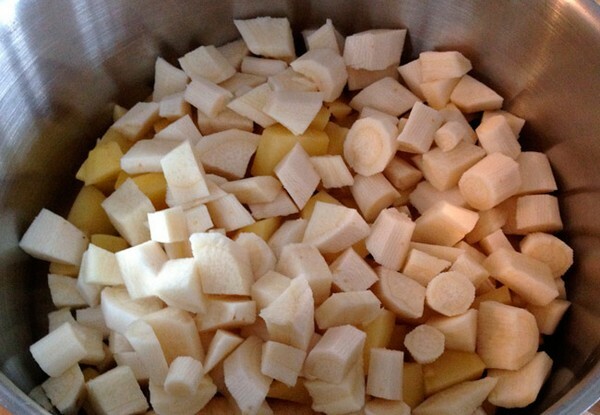
You can not cut the parsley at all, but freeze it whole by wrapping it in the food film first.
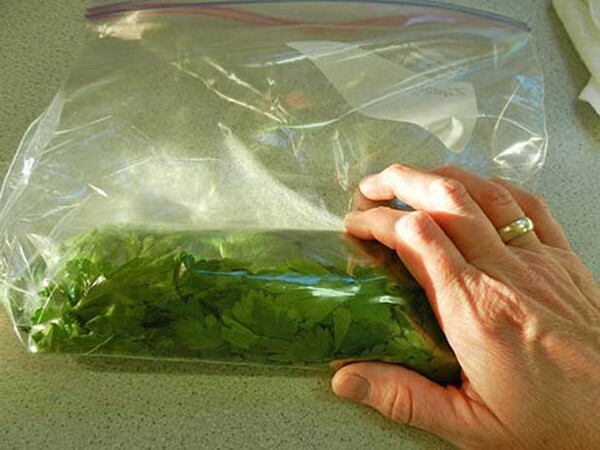
As for the cut parsley leaf, here it is possible to do three ways of how to freeze parsley for the winter in the refrigerator:
- Large cutting of leaves is folded into plastic containers or in vacuum packing.
- The finely cut leaves are folded into a mold for freezing and filled with water. After fully freezing, the prepared cubes or other forms are transferred to separate packages.
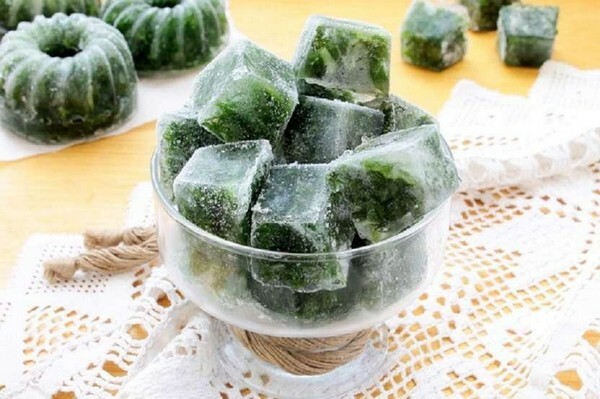 Frozen parsley cubes
Frozen parsley cubes - The greens are ground in a blender and laid in molds.in this case no additional water is added to them.
Preservation
I can preserve parsley in two ways:
- salt;
- with vegetable oil.
In the first case, greens and root crops are ground on a grater or in a food processor. In the prepared mixture is added a large table salt at the rate of 5: 1, for five parts of the raw material one part of the salt, after which it is thoroughly mixed.
Store parsley with salt for the winter in an airtight form in a sterile glass jar. The optimum temperature is 3-8 degrees Celsius.
For salads with dressing from oil, the second method of preservation is suitable. For this, the crushed parsley is placed in cans and poured with refined oil so that air does not penetrate to the parsley. Store this blank in the refrigerator.
You can better understand the process of pickling by watching the video:
